#habitatloss
Explore tagged Tumblr posts
Text
Bee World: Challenges & Hope 🐝
Are bees endangered? Yes! 🚨 Bees face habitat loss, climate change, and pesticides. Honey bee decline affects our food supply. But there's hope: Stingless bees thrive. Learn bee conservation and join us to protect vital pollinators!
#savethebees#beespecies#endangered#bees#pesticides#climatechange#beeconservation#habitatloss#beefacts#intrestingfacts#facts#pollinators#endangeredspecies#nature#ecosystem#enviroment#insects#pollination#geohoney#naturelover#geohoneylovers
48 notes
·
View notes
Text
91-2782 - Bee the change in Dubai
Here is the sketch I did while we waited for our next flight in Dubai airport (on our way to the UK from the Philippines). There are several of these ‘trees’ dotted about the place, put up, I think, by BeeTheChange.org who raise funds to support nature restoration and save pollinators. One of the hanging signs (in the shape of a bee) notes that “climate change, pesticide use and natural habitat…

View On WordPress
#Airport#Art#ArtDaily#ArtistsOfInstagram#BioDiversity#Daily#dailysketches#DailySketching#draweveryday#Drawing#DrawWhatYouSee#HabitatLoss#InkSketch#makearteveryday#mysketchbook#OnLocationDrawing#Painting#Pollinators#Sketch#sketchbook#sketchdaily#SketchFromLife#SketchingMyLife#sketchoftheday#Travel#TravelSketch#Urbansketching#usk#Watercolour#WatercolourSketching
2 notes
·
View notes
Text
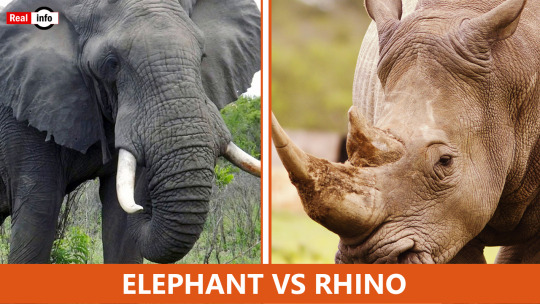
#Indianelephant, #rhinoceros #Horn #Wildlifetrafficking #BigFive #Savannah #TuskProtection #Nationalparks #Wildlifereserves #Biodiversity #Africanwildlife #Asianwildlife #Wildlife #sanctuaries #Elephant #calves #Rhinocalves #Wildlifepoachers #Conservation #efforts #Wildliferehabilitation #Antipoaching #measures #AnimalRights #Wildlifedocumentaries #Wildlifephotography, #Elephantbehavior #rhinobehavior #Conservation #organizations #Wildlifetracking #Wildliferangers #Wildlifeeducation #Ecotourism #Conservationbiology #Wildlifehabitats #Elephant #intelligence #Rhinointelligence #Wildlifeextinction #Wildlife protection #lawsAnimal #welfare #Wildliferesearch #Wildlife migration #Wildlife #populationtrends
A matchup between an elephant and a rhinoceros would be quite the spectacle! Both are massive animals with unique features and strengths.
In terms of sheer size, African elephants are the largest land animals, weighing several tons and standing up to 13 feet tall at the shoulder. Rhinoceroses, on the other hand, are smaller but still formidable, with the largest species, the white rhinoceros, weighing around 2.2 to 3.6 tons.
In a confrontation, the outcome would likely depend on various factors such as the species of elephant (African vs. Asian), the species of rhinoceros (white, black, Indian, etc.), the individuals involved, and the circumstances of the encounter.
Elephants are known for their intelligence, social structure, and formidable strength. Their tusks can be used as weapons, and they have powerful trunks that can push over trees and fend off predators.
Rhinoceroses, while not as agile or intelligent as elephants, possess thick, armor-like skin and formidable horns. Their charge can be incredibly powerful, and they have been known to flip vehicles in confrontations.
youtube
#Elephant#Rhino#Wildlife#Conservation#Safari#Endangered species#Ivory#Poaching#Habitatloss#Africanelephant#Indian elephant#rhinoceros#Horn#Wildlifetrafficking#BigFive#Savannah#TuskProtection#Nationalparks#Wildlifereserves#Biodiversity#Africanwildlife#Asianwildlife#sanctuaries#calves#Rhinocalves#Wildlifepoachers#efforts#Wildliferehabilitation#Antipoaching#measures
2 notes
·
View notes
Text
Monthly Roundup April 2024
❤️ Heart Failure Awareness Week, May 5 - 11 ❤️
This week highlights the importance of sharing information to help raise awareness, increase public knowledge, and provide a better understanding of heart health. Follow @canadianheartfailuresociety and visit heartfailure.ca to access downloadable resources 🩺
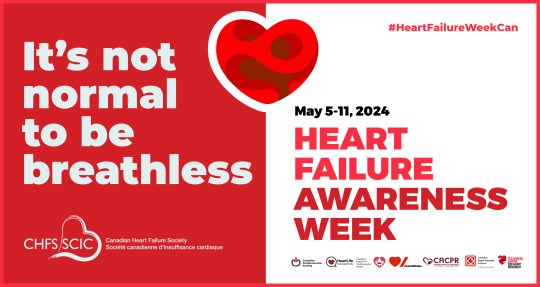


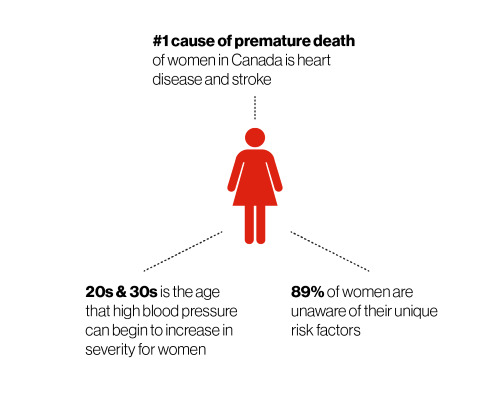

For the 4th year I will be raising money in support of the Heart & Stroke Foundation of Canada ❤️/ Donations received between now and June 30th will be matched until $500,000 in gifts are received. You may contribute to my page HERE Once again I have set an ambitious goal of $1000. Thank you for supporting me, and Heart & Stroke, in memory of my Dad 🎗

______________________________________________________________

Many children must live with the trauma of war. Here's how to help them
Conflict in Ukraine, Gaza and Sudan has led to millions of children losing family members, fleeing their homes and being caught up in the fighting themselves. The effects could last for decades.
"In particular, they say, from the get-go, the international community needs to not only focus on acute humanitarian needs like food and shelter, but also on the longer-term requirements of providing community and family support, trauma-informed mental health and social services and lasting infrastructure like stable living conditions and medical care."
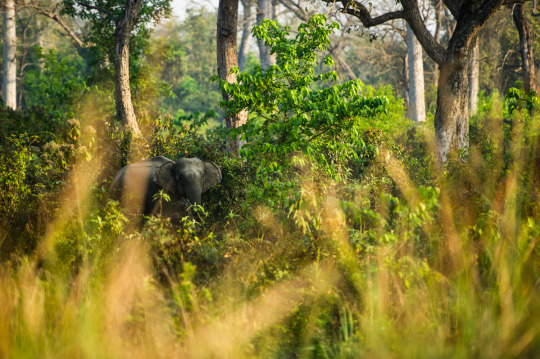
BIG STEPS FORWARD: A PATH TO ELEPHANT CONSERVATION IN NEPAL "For Asian elephants, who need lots of space to roam, landscape-level conservation means securing and protecting existing habitat fragments and corridors in the Terai Arc Landscape so they can regrow naturally and resist further degradation. This will rebuild safe corridors for elephants to travel and avoid human contact. It also involves using the latest technology — such as motion-sensing cameras, satellite GPS tracking, molecular genetics and conservation drones — to map elephants’ migratory behaviours and monitor corridors. These game-changing tools also help us understand elephants’ use of space and keep an eye on the success of our conservation efforts."
NASA is tracking endangered animal habitats from space
"The rapid decline of many iconic animal species due to habitat loss presents one of the most critical challenges in modern conservation. NASA, an organization typically associated with space exploration, has emerged as a valuable partner in the fight to save endangered animals. By utilizing cutting-edge satellite technology, NASA provides vital data on endangered wildlife habitats, informing and driving conservation strategies around the world."
Elephant conservation: Habitat preferences to mitigate conflict
"African savanna elephants, now classified as endangered, struggle with the relentless expansion of human settlements into their native range. A NASA study offers insights into elephant habitat preferences, particularly in less protected zones where conflict of with humans is more likely. The researchers found that elephants consistently favor dense forests, especially near waterways. Unfortunately, these same areas are often targeted for tourism infrastructure. Armed with this knowledge, conservationists and land managers can work together to identify areas where development poses less risk to elephant populations, striking a balance between economic needs and conservation goals. The experts can also strategically prioritize the protection of the dense forest habitats that elephants rely on for survival."
______________________________________________________________
How you can get involved
Consider the following ways to get involved:
Support
Targeted donations
Consider volunteering your time or skills.
Raise awareness
The power of your voice
Fact-based advocacy
Make informed choices
Sustainable consumption
Scrutinize business practices
Reduce, reuse, recycle
#monthlyroundup#saveelephants#saynotoivory#wildlife#conservation#Africa#Nepal#NASA#childrensrights#childrennotsoliders#acttoprotect#rehabilitation#reconciliation#reintegration#ceasefirenow#humanitarianaid#heartandstroke#everybeatcounts#beatasone#beatcardiacarrest#beatstroke#beatheartdisease#heartandstrokerideasone#rideforheart#foryouDad#conflict#humanrights#WWF#habitatloss#heartfailureweekcan
0 notes
Text
In the lush landscapes of Pennsylvania, an unassuming plant harbors a remarkable secret. The Losh Run Box Huckleberry, known scientifically as Gaylussacia brachycera, is not just any ordinary flora. This extraordinary organism is one of the oldest living entities on our planet, estimated to be around 13,000 years old. Its longevity tells a story of…
#ancientOrganisms#botany#clonalColonies#ecologicalResilience#environmentalAwareness#EnvironmentalConservation#GaylussaciaBrachycera#habitatLoss#humanImpactOnNature#LoshRun#BoxHuckleberry#naturalHeritage#Pennsylvania#naturalWonders#rhizomePropagation#threatenedSpecies#frnwh
1 note
·
View note
Text
ICONIC Species are THRIVING in the Great Bear Rainforest - Here's Why
ICONIC Species are THRIVING in the Great Bear Rainforest - Here's Why https://www.youtube.com/watch?v=d0ejBH01C8o Become a channel member: https://www.youtube.com/channel/UC3ZyPtFAKgvbn7bkp2x7iHg/join The Great Bear Rainforest is a model for conservation success stories in areas that are ecoligically and culturally important. Through the collaboration of FIrst Nations, governments, conservation groups, and other stakeholders, the creation of the Great Bear Rainforest Agreement was a landmark milestone to protecting the wildlife that call this place home. Species like the Spirit bear, coastal wolf, and salmon are inconic animals that emobody why this place deserves to be protected. Helpful Resources From This Video: Link: https://ift.tt/7msQE6g Link: https://ift.tt/CHAmqlP 🔔Subscribe for more stories about the environment, conservation, climate change, and the world we live in: https://www.youtube.com/@DavidBysouth/?sub_confirmation=1 #climatechange #conservation #environment #wildlife #travelvlog #habitat #rainforest #salmon #protectedareas #habitatloss #bear ⚠️Disclaimer: I do not accept any liability for any loss or damage incurred from you acting or not acting as a result of watching any of my publications. You acknowledge that you use the information I provide at your own risk. Do your research. Copyright Notice: This video and my YouTube channel contain dialogue, music, and images that are the property of David Bysouth. You are authorized to share the video link and channel and embed this video in your website or others as long as a link back to my YouTube channel is provided. © David Bysouth via David Bysouth - PhD https://www.youtube.com/channel/UC3ZyPtFAKgvbn7bkp2x7iHg December 21, 2024 at 07:25PM
#conservationvlogs#biodiversityexplorations#natureadventures#environmentaleducation#eco-friendlylifestyletips#environmentaladvocacy#climateactioninitiatives
0 notes
Text
The Impact of Climate Change on Wildlife
https://supedium.com/interesting-facts/the-impact-of-climate-change-on-wildlife/ #adaptation #biodiversity #Climatechange #Conservation #habitatloss #Wildlife The Impact of Climate Change on Wildlife https://supedium.com/interesting-facts/the-impact-of-climate-change-on-wildlife/
0 notes
Text
youtube
Giraffes at Risk: New Protections Proposed to Save These Majestic Giants! Join us as we explore the urgent challenges facing giraffes, including habitat loss, poaching, and climate change. Discover the groundbreaking proposal for federal protections under the Endangered Species Act and how it could impact giraffe conservation. Learn why these iconic animals are vital for biodiversity and what you can do to help. Don't miss this important discussion on the future of giraffes and our planet's ecological health! Subscribe👇: https://sub.dnpl.us/AANEWS/ - Want some Great Buys check out our List: https://viralbuys.vista.page - All our links (including those to help with editing): https://sleek.bio/aanews69 - Our Patreon (Great Deal) https://www.patreon.com/DNPLServices - #GiraffeConservation #EndangeredSpeciesAct #HabitatLoss #Poaching #ClimateChange #Biodiversity #WildlifeProtection #AnimalConservation #EcologicalHealth #SaveTheGiraffes #giraffes #endangered species #wildlife conservation #biodiversity #habitat loss #poaching #climate change #conservation efforts #animal protection #U.S. wildlife officials #aanews, #aanews69, #news,
0 notes
Text
youtube
The hippopotamus, known scientifically as Hippopotamus amphibius, is a fascinating creature inhabiting the rivers and lakes of sub-Saharan Africa. This large mammal, often referred to as a "hippo," is known for its formidable size, semi-aquatic lifestyle, and distinctive appearance.
Physically, hippos are massive animals with barrel-shaped bodies, short legs, and large mouths that house formidable tusks. Despite their hefty appearance, they are surprisingly agile in water, where they spend the majority of their time to keep cool and avoid sunburn. Hippos are herbivores, grazing on grasses at night and retreating to water during the day, making them primarily nocturnal.
Their social structure is complex, with groups led by dominant males who establish territories in the water, fiercely defending them from intruders. Hippos are known for their vocalizations, including grunts, wheezes, and snorts, which they use for communication within their groups.
Conservation of hippos is increasingly important due to habitat loss and poaching. Their populations are threatened by human activities such as dam construction and illegal hunting for their ivory tusks. Efforts to protect hippos involve creating protected areas and promoting sustainable practices around their habitats.
In popular culture, hippos are often depicted as both fearsome and comical, contributing to their iconic status in children's books, cartoons, and games. Their unique characteristics make them a symbol of Africa's diverse wildlife and conservation challenges.
**Hashtags:**
#Hippopotamus #Wildlife #Conservation #AfricanWildlife #Nature #AnimalFacts #Safari #EndangeredSpecies #Ivory #HabitatLoss #AquaticLife #NocturnalAnimals #Herbivore #RiverHorse #Savannah #AfricanSafari #WildlifePhotography #Biodiversity #Ecosystem #ProtectWildlife #WaterLife #BigAnimals #WildlifeHabitat #HippoFacts #AnimalBehavior #SemiAquatic #LargeMammals #GrassEaters #AnimalKingdom #Zoology #EnvironmentalConservation #NaturalHabitat #AfricanRivers #WildlifeProtection #ThreatenedSpecies #AnimalCommunication #BigMouth #TuskedAnimals #HippoLove #ConservationEfforts #AfricanAnimals #JungleLife #SustainablePractices #ProtectTheWild #ZooLife #AfricanSavannah #RiverCreatures #AfricaTravel #HippoArt
0 notes
Text
Aliza Chasan - 21 species removed from endangered list due to extinction, U.S. wildlife officials say:
EndangeredSpecies #Extinction #USFWS #HumanEncroachment #Encroachment #HabitatLoss #InvasiveSpecies #Diseases #Conservation #PopulationRebound #Rebound #Recovery #EnvironmentalScience #Ecology
0 notes
Photo

#MondayMotivation shout out from #wildographydudette @wendz222 Today let’s focus on the the world’s most trafficked mammal, the PANGOLIN. * Pangolins, like SO MANY other species, are threatened by humanity and the destruction we have created. The illegal wildlife trade has generated a lot of attention towards pangolins - and rightfully so -, but habitat loss is another threat added to a long list of threats that these scaly mammals face globally. We CAN create resilience and balance in ecosystems to protect wildlife. We CAN. But something needs to change. WE need to change. Shoutout to those organisations and individuals that have dedicated their energy and efforts into creating and enforcing sustainable conservation! 🙌 Go out and educate yourselves today and do something positive that will contribute to a healthier environment🌿 #Wildography #pangolin #wildlife #conservation #protect #conserve #preserve #resilience #ecosystem #sustainability #sustainable #environment #biodiversity #ecolifestyle #globalcrisis #climatecrisis #habitat #habitatloss #habitatprotection #nature #naturethings #change #protection #saveourwildlife #balance (at Tswalu Kalahari) https://www.instagram.com/p/CXtNapqMpNZ/?utm_medium=tumblr
#mondaymotivation#wildographydudette#wildography#pangolin#wildlife#conservation#protect#conserve#preserve#resilience#ecosystem#sustainability#sustainable#environment#biodiversity#ecolifestyle#globalcrisis#climatecrisis#habitat#habitatloss#habitatprotection#nature#naturethings#change#protection#saveourwildlife#balance
77 notes
·
View notes
Photo

My parents took us to all kinds of natural wonders when we were kids. One park, Callaway Gardens, was a frequent stop in my Georgia childhood. They had magnolia trees to scale, squirrels to chase, a lake to swim in, and--best of all--a giant butterfly garden. A huge glass room filled to the brim with monarch butterflies, eating sweet bananas and fluttering overhead like magic. I have patchy memories of interpretive signage and guides telling us about these sharply bedecked orange-and-black creatures: I learned about aposematic signaling from their bright colors, as well as Batesian mimicry--they tasted so bad to birds, that other butterflies mimicked them in appearance to gain the defense. Once when one landed on my hand to "lick" off some errant soda I'd spilled earlier, it was like a kiss from a wild thing--and I resolved to repeat the spill whenever I came back.⠀ ⠀ Their erratic orange magic continued outside the glass building--at home, at school, wandering through meadows at church, fluttering through my mother's garden. Monarchs, everywhere, all over the place, common as clouds. They were a constant presence in my Southern childhood. ⠀ ⠀ When I see one now, it is with the nostalgic delight of meeting an old friend--tempered by a sorrow I can't quite put into words. According to the Center for Biological Diversity, monarchs have declined in my part of the world by more than 80% in the last two decades. This tracks with my anecdotal observations of seeing them less and less often over the years, even though I spend much of my time outside--alignment between the big and small pictures. A once everyday sight, increasingly rare. ⠀ ⠀ Since I struggle with capturing the sorrow in my own words, I will borrow those of William Beebe:⠀ ⠀ "...when the last individual of a race of living things breathes no more, another heaven and another earth must pass before such a one can be again."⠀ ⠀ #monarchbutterfly #acrylic #painting #art #illustration #monarch #habitatloss #climatechange #reflection #fiveyearsold #30years #30paintings #catchingup #butterfly #butterflybushes #flowers #gardens #colors #biodiversity #hopeforbetter https://www.instagram.com/p/CRlfOy5jjon/?utm_medium=tumblr
#monarchbutterfly#acrylic#painting#art#illustration#monarch#habitatloss#climatechange#reflection#fiveyearsold#30years#30paintings#catchingup#butterfly#butterflybushes#flowers#gardens#colors#biodiversity#hopeforbetter
32 notes
·
View notes
Text

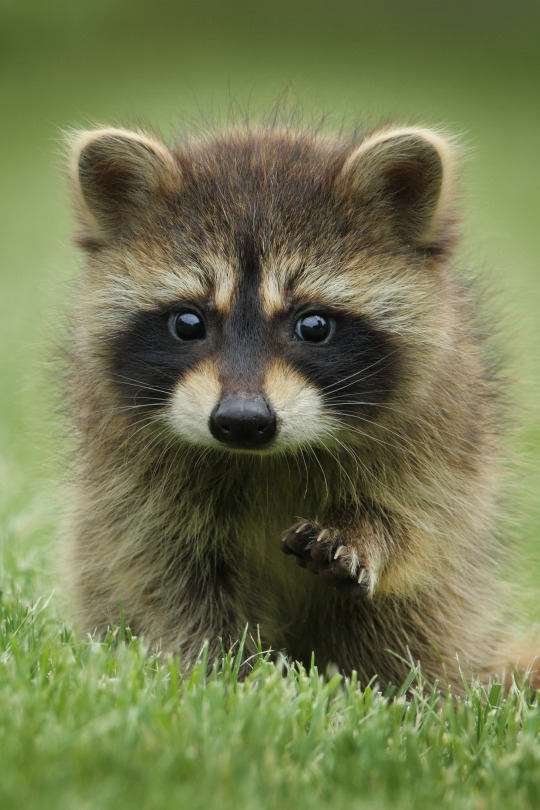


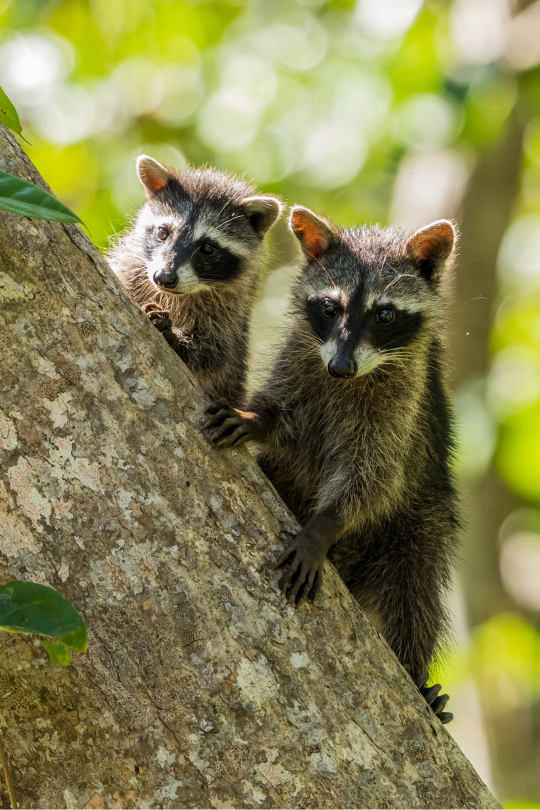

It's October 1st, 🦝 International Raccoon Appreciation Day. This event was created to encourage us to learn more about raccoons and show our appreciation by protecting their habitats.
Raccoons are nocturnal animals, native to North America and northern South America. In the wild, raccoons have a life expectancy of about 2 to 3 years, but in captivity, they can live up to 20 years. These cute little mammals are omnivores like us who eat a variety of foods – fruits, nuts, berries, insects, rodents, frogs, crayfish, and eggs, while keeping an eye out for predators like cougars, bobcats, coyotes, foxes, and owls.
Despite their appeal, though, some people look upon raccoons as vermin. They can be pesky critters – turning over trash cans, tearing up gardens, stealing eggs from chicken coops, etc. They can also carry diseases like rabies and roundworm.
Most people love raccoons anyway, though – especially the unique way they use their paws to "wash" their food. They also use their little hands to open latches and remove lids from containers. They can rotate their rear paws 180 agrees, which allows them to climb down trees headfirst. Raccoons are incredibly smart, too. At one time, they were used instead of lab rats, but the strong-willed raccoons kept outsmarting the scientists. Because of their high intelligence and cuteness, some people keep raccoons as pets. President Calvin Coolidge had two pet raccoons while he was in the White House. How cute! ☮️ Peace… Jamiese of Pixoplanet
#InternationalRaccoonAppreciationDay#RaccoonAppreciationDay#Raccoons#cute#habitatloss#habitatdestruction#naturalhabitats#RockyRaccoon#Bandit#RaccoonMask#RaccoonEyes#jamiese#pixoplanet#education#climatechange#conservation#animals
7 notes
·
View notes
Photo

Thrilled to announce the description of one of the largest #frogs in #Madagascar, Mantidactylus radaka! It took a lot of sleuthing, including sequencing 120-year-old specimens, to be able to confidently describe this #newspecies! Its description was important, however, because these are among the frogs that are eaten by people in Madagascar, and they may be at risk of local over-harvesting, in additional to ongoing #deforestation and #habitatloss. You can find a link to get the PDF of the paper at http://www.markscherz.com/publications . . . . . . #science #taxonomy #systematics #museomics #taxonomcis #research #Mantidactylus #naturalhistory #herpetology #wildlife #animals #zoology #Mantellidae #rainforest #frog #diversity #peerreview #vertebrate #highthroughputsequencing #illumina #radaka #Malagasy #Sahona https://www.instagram.com/p/B_2LtWGgGyv/?igshid=ozlvb95cl13c
#frogs#madagascar#newspecies#deforestation#habitatloss#science#taxonomy#systematics#museomics#taxonomcis#research#mantidactylus#naturalhistory#herpetology#wildlife#animals#zoology#mantellidae#rainforest#frog#diversity#peerreview#vertebrate#highthroughputsequencing#illumina#radaka#malagasy#sahona
269 notes
·
View notes
Text
Why Caribou are Important in Canada
Why Caribou are Important in Canada https://www.youtube.com/watch?v=SyaK9xIcK5w Caribou are an iconic wildlife species that are threatened in Canada. Conservation practices led by Indigenous nations, Parks Canada, and academic researchers are helping to protect and restore endangered hers. In this video, we explore different conservation methods to protect important habitats. Learn More: Indigenous conservation: https://ift.tt/vAwBZ9D Parks Canada: https://ift.tt/Fu8qUvl Lichen Transplant: https://ift.tt/P2bvr0f Please visit my website to get more information: https://ift.tt/aJdz6X8 🔔Subscribe for more stories about the environment, conservation, climate change, and the world we live in: https://www.youtube.com/@DavidBysouth/?sub_confirmation=1 #climatechange #environment #trees #caribou #wildlife #animals #travelvlog #conservation #habitatloss ⚠️Disclaimer: I do not accept any liability for any loss or damage incurred from you acting or not acting as a result of watching any of my publications. You acknowledge that you use the information I provide at your own risk. Do your research. Copyright Notice: This video and my YouTube channel contain dialogue, music, and images that are the property of David Bysouth. You are authorized to share the video link and channel and embed this video in your website or others as long as a link back to my YouTube channel is provided. © David Bysouth via David Bysouth - PhD https://www.youtube.com/channel/UC3ZyPtFAKgvbn7bkp2x7iHg October 08, 2024 at 06:00PM
#conservationvlogs#biodiversityexplorations#natureadventures#environmentaleducation#eco-friendlylifestyletips#environmentaladvocacy#climateactioninitiatives
0 notes
Text
The Effect of Urbanization on Local Ecosystems
https://supedium.com/ecosystem-and-environment/the-effect-of-urbanization-on-local-ecosystems/ #biodiversity #ecosystems #habitatloss #pollution #SustainableDevelopment #Urbanization The Effect of Urbanization on Local Ecosystems https://supedium.com/ecosystem-and-environment/the-effect-of-urbanization-on-local-ecosystems/
0 notes